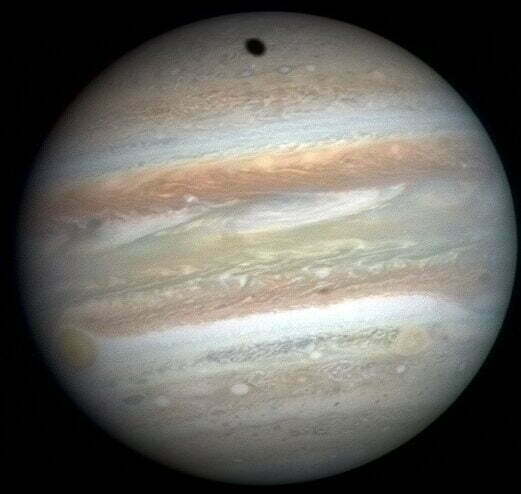Gas planets are celestial bodies with a composition predominantly made up of gases. They are part of the solar system, which consists of eight planets. While stars are sources of energy due to thermonuclear reactions in their interiors, gas planets do not have such reactions and rely on other sources for their energy. There are four gas planets in the solar system: Jupiter, Saturn, Uranus, and Neptune. These planets have a large mass and shape close to a ball, just like terrestrial planets such as Mercury, Venus, Earth, and Mars.
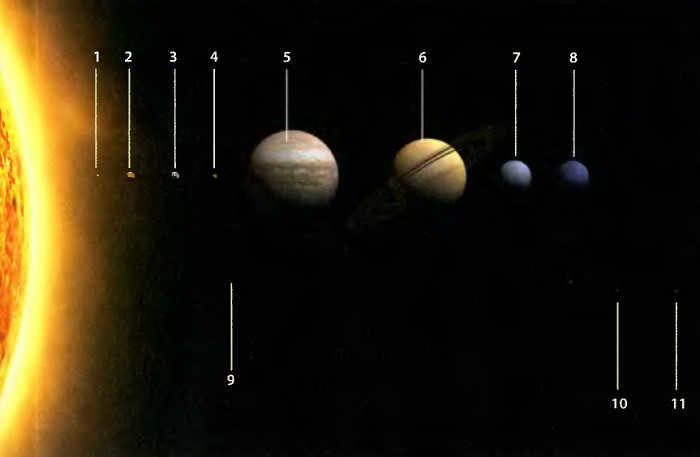
1. Mercury 2. Venus 3. Earth 4. Mars 5. Jupiter 6. Saturn 7. Uranus 8. Neptune 9. Ceres 10. Pluto 11. Erid
The Formation of Planets
The initial gas-dust cloud underwent a rapid and catastrophic collapse due to its own gravitational force, resulting in the formation of a protostar. The remaining dust and small particles coalesced to form a protoplanetary disk that encircled the protostar. Over time, the protoplanetary disk underwent further compaction, leading to the formation of individual clumps known as planetesimals. These planetesimals eventually evolved into the future planets of the solar system. As the protostar continued to experience compression and heating, thermonuclear reactions ignited within it, transforming it into a fully-fledged star. As the temperature increased at the center, a vaporization zone emerged, causing light elements to be pushed away from the Sun by solar wind and captured by the future gas giants, while heavier and denser elements coalesced to form rocky planets.
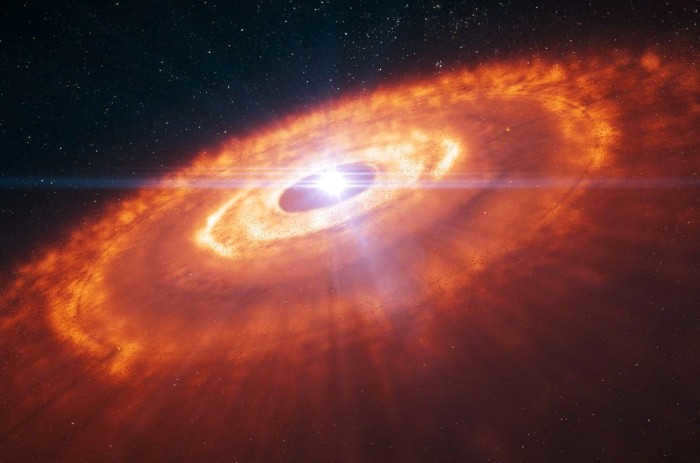
The formation of the planets in our solar system occurred as a result of the gravitational forces and the activity of the developing star, which caused the matter of the protoplanetary cloud to come together.
What materials make up terrestrial planets?
Terrestrial planets, such as Earth, are primarily composed of elements like iron, magnesium, aluminum, silicon, oxygen, and other heavy elements. While these planets have smaller diameters compared to gas giants, they possess much higher densities.
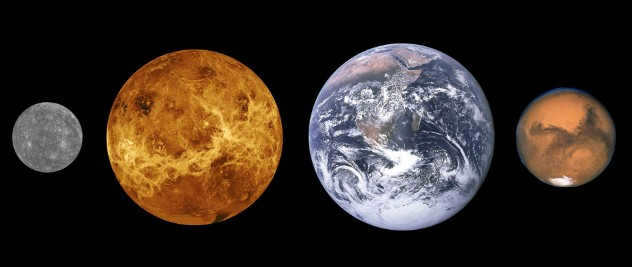
Out of all the rocky planets, only Earth appears blue when observed from outer space because of the makeup of its atmosphere.
What sets gas giants apart?
Gas giants have a larger diameter compared to the planets in the Earth group. They lack a solid surface. Their average density is lower than that of the rocky planets, and they rotate at very high speeds around their axis. The composition of their atmospheres is primarily made up of hydrogen and helium, while the cores in Jupiter and Saturn are believed to be liquid, metallic, and in Uranus and Neptune, a mixture of ice and various compounds such as hydrogen, oxygen, carbon, nitrogen, and more. Gas giants also have ring systems.
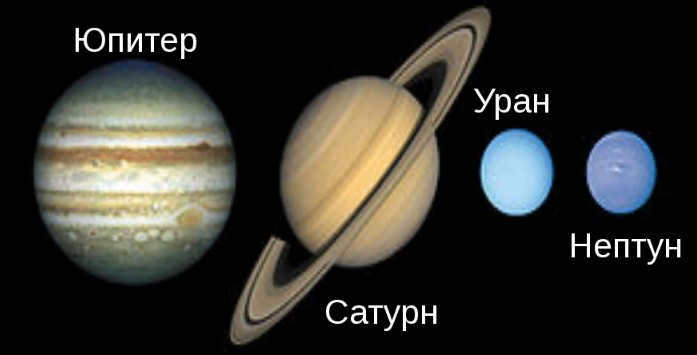
What sets apart each of the planets in the Earth group?
Mercury, being the closest planet to the Sun, experiences extreme temperature fluctuations on its surface, ranging from -183 °C to +427 °C. Venus, on the other hand, has an atmosphere composed of carbon dioxide and nitrogen. The greenhouse effect on Venus results in a surface temperature of +464 °C, which is higher than that of Mercury. Mars is often referred to as the Red Planet because of its reddish surface, which is caused by iron oxide. As of now, Earth remains the only planet suitable for human habitation.
What are the unique characteristics of gas giants?
Jupiter possesses twice the mass of all the other planets in our solar system combined. Additionally, it rotates on its axis at a faster rate than the other planets and boasts the highest number of satellites. Saturn showcases a spectacular ring system, making it the most visually stunning gas giant. It is also the only planet with a density lower than that of water. Uranus, on the other hand, rotates in a peculiar manner, resembling a rolling ball “lying on its side.” As a result, its poles experience 42 years of darkness and winter, followed by another 42 years of sunlight and summer. Lastly, Neptune is known for its perpetual storms that relentlessly rage on.
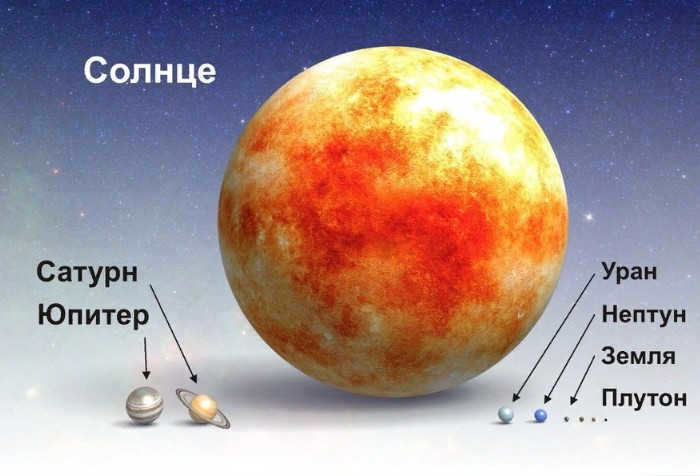
The diagram illustrates the relative sizes of the eight planets and three dwarf planets within our solar system. Jupiter takes the crown as the largest planet, while the Sun dwarfs all others in size.
What is the origin of the planets’ names?
All of the planets are named after deities from ancient Roman mythology. For instance, Venus derives its name from the Roman goddess of love. Notably, various features on Venus’ surface are also named after different goddesses. As an example, there is a deep canyon on the planet referred to as Diana, after the Roman goddess of the hunt.
What is the number of rings around Jupiter and Uranus?
Jupiter possesses a set of three rings which cannot be distinguished even when observed through the most advanced telescope. Currently, a total of thirteen rings have been detected around Uranus.
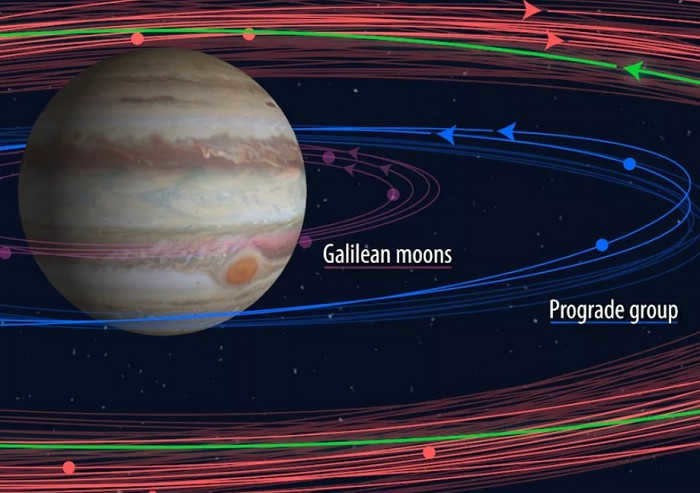
Jupiter boasts an impressive number of satellites, with a whopping 63 in total! And the scientific community is continuously uncovering new ones. Aside from the well-known Galilean satellites, including Io, Europa, Ganymede, and Callisto, there is also a lesser-known group. These satellites are depicted in the accompanying figure.
What is the number of satellites orbiting Venus?
Excluding Mercury, Venus stands alone as the sole planet in our solar system without any satellites. It is the only planet that does not have any companions orbiting around it.
What is the number of satellites orbiting Saturn?
Presently, Saturn is known to have 63 satellites orbiting around it. Each of these satellites possesses unique characteristics. For example, Enceladus is home to volcanoes that operate at remarkably low temperatures. On the other hand, Titan boasts an atmosphere that is denser compared to that of Earth.
What is the count of satellites revolving around Pluto?
Up until recently, Pluto was recognized as the ninth planet in our solar system. However, in 2006, it was officially reclassified as a dwarf planet due to its relatively low mass and subsequent gravitational pull.
Which celestial body lacks a solid surface?
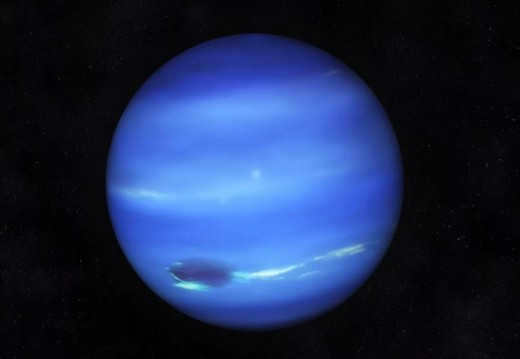
The celestial body known as Neptune is composed of a combination of gases and ice, with a solid core at its center. Unlike terrestrial planets, Neptune lacks a solid surface, making it impossible for any spacecraft to make a landing on its non-existent ground.
It is worth noting that Neptune is not the sole planet in our solar system that lacks a solid outer layer. Other gas giants such as Jupiter, Saturn, and Uranus also consist primarily of gases and liquids, lacking a solid surface.
Out of all the planets, which one boasts the lowest temperatures?
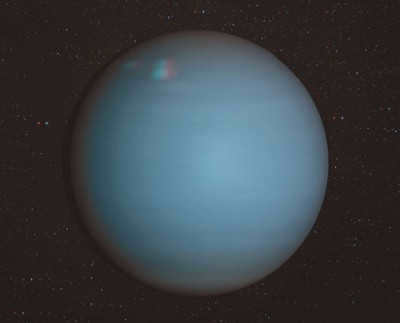
Uranus, the seventh planet in our solar system, is about 62 times larger than Earth. Despite being closer to the Sun than Neptune, Uranus is much colder. Temperatures on Uranus can reach as low as -220 °C. This is because Uranus lacks its own internal heat source, unlike other planets. Scientists believe that the planet’s core is not hot and is made up of rock and iron.
What is the reason behind Pluto being classified as a dwarf planet?
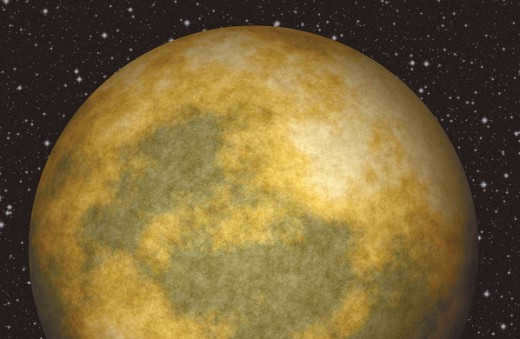
Pluto, which was officially recognized as the ninth planet in our solar system upon its discovery, later underwent extensive research and was reclassified as a dwarf planet due to its relatively small size. In fact, the size of Pluto is comparable to that of the Moon.
One of the unique features of Pluto is its highly elongated orbit, which causes it to be closer to the Sun than Neptune at certain points and then drift billions of kilometers away from our star at other times.
Which celestial body is known as the Morning Star?
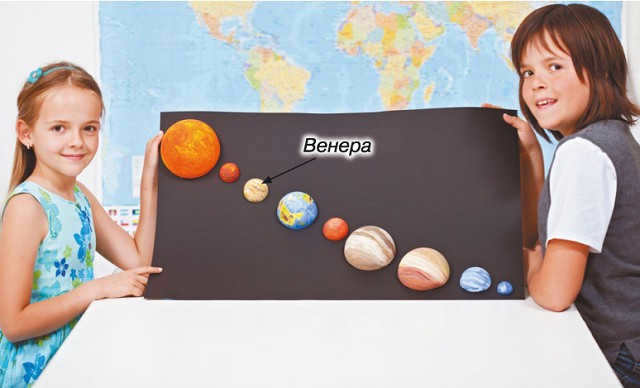
Venus is known as the second most distant planet from the Sun. It is often referred to as the Morning Star or the Evening Star due to its visibility during sunset and sunrise, when other stars may not yet be visible or have already disappeared.
Venus is completely inhospitable for any form of life. The planet lacks water and experiences extremely high temperatures, reaching up to +480 ° C. Its surface consists of a flat landscape dotted with rocks.
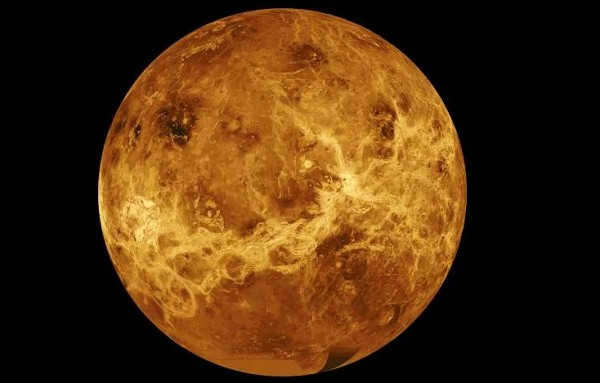
The Himalayas are widely known as Earth’s record-breaking mountains, with the highest peak being Jomolungma, towering at approximately 8,850 meters. However, on our closest celestial body, the Moon, there are mountains that reach an impressive 12 kilometers in height.
So, how do things compare on our neighboring planets? The Martian mountains surpass even 25 kilometers in height, while Venus takes the crown with mountains soaring up to 30 kilometers, some of which are active volcanoes. The magnitude and sheer terror of these volcanic eruptions are beyond comprehension.
Is it a fact that the weight of our planet is increasing?
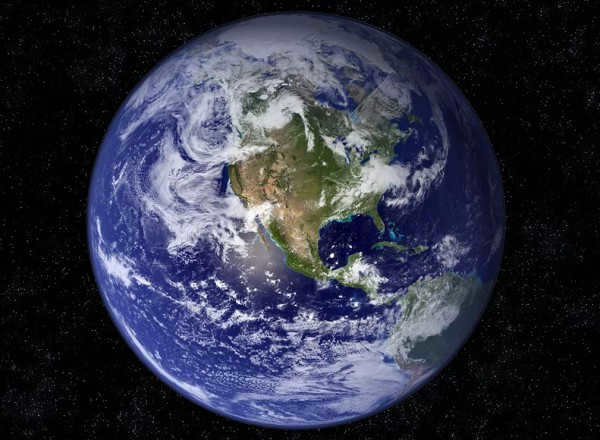
Scientists have been intrigued by this fascinating phenomenon for a long time. Based on calculations, it has been found that, on average, the Earth gains an additional ton of weight every hour. Researchers speculate that this extra weight is acquired from outer space. Cosmic dust settles on the planet almost continuously, and occasionally, fragments of meteorites, some of which are quite large, make their way to the surface.
The impact of such cosmic bombardment is particularly evident in the persistent footprints left on the ice of Antarctica.
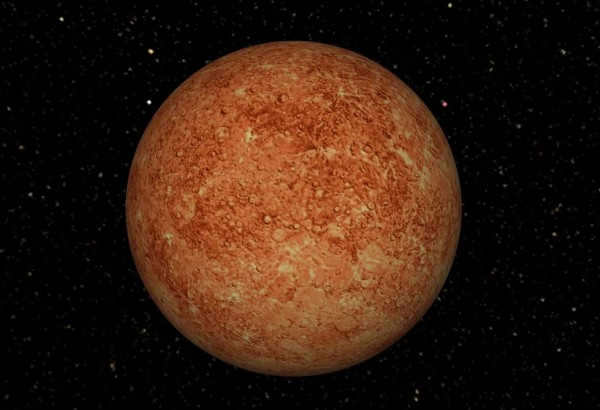
It appears that there is nothing to ponder: undoubtedly, the one that is closest to the Sun. That would be Mercury. Its surface is heated to a scorching 410 degrees Celsius. However, Mercury is also regarded as one of the coldest planets in the entire solar system.
And there is no need to be astonished. Just as the Moon is always facing the Earth with just one side, Mercury also presents only one side to the neighboring Sun. That is where the heat prevails. On the other hand, the dark side of the planet experiences a temperature close to absolute zero – minus 273 degrees.
What is the origin of the name Mercury?

The name of the planet Mercury was derived from the ancient Roman god who was revered as the patron deity of commerce. This deity was often depicted wearing winged sandals, which allowed him to move swiftly wherever he desired. Furthermore, Mercury is known as a “fast-paced” planet as it completes one orbit around the Sun in just 88 Earth days.
Mercury is located at a distance of “only” 58 million kilometers from the Sun, whereas the Earth is approximately 149.5 million kilometers away from the Sun. Despite its close proximity to the scorching star, the temperature of Mercury’s surface is not significantly affected. During the “winter” season, the temperature can plummet to as low as -180 degrees Celsius. On the other hand, the “summer” season on Mercury can reach scorching temperatures of up to +430 degrees Celsius.
What is the weight of the Earth?
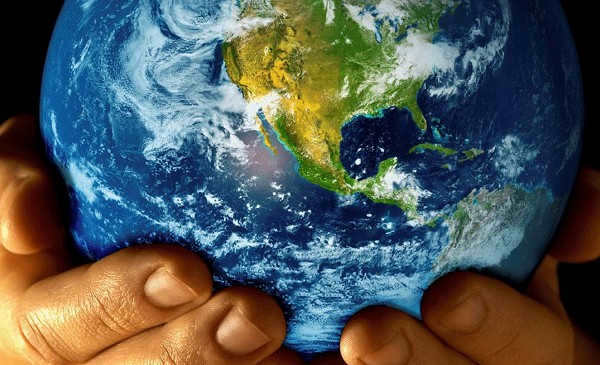
While it is not possible to physically weigh the planet, scientists have been able to calculate the Earth’s mass using the concept of universal gravitation, which was first discovered by Isaac Newton in the 17th century. Newton’s theory states that the force of attraction between two bodies is determined by their masses and the distance between them.
In essence, scientists have measured the force with which the Earth attracts a known mass, such as a ton of lead, and used this information to determine the planet’s mass. The Earth’s mass has been calculated to be approximately 6.6 sextillion tons. In numerical form, this is equivalent to 6,600,000,000,000,000,000,000,000,000,000,000,000,000,000,000,000,000.
What is the biggest planet in the solar system?
Jupiter holds the title for being the largest planet in our solar system. Its size is over 1,000 times greater than Earth. Due to its significant distance from the Sun, Jupiter has a surface temperature of approximately -140 °C.
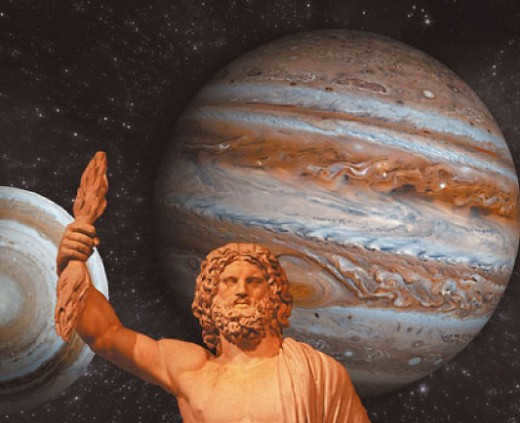
Jupiter, the largest planet in our solar system, is aptly named after the supreme god of the Roman pantheon.
Jupiter boasts an impressive collection of 63 satellites orbiting around it. In addition, this magnificent planet is also adorned with a delicate ring composed of fine dust and tiny stones. However, due to its edge-on orientation, the ring remains hidden from our view on Earth.

Despite its massive size, Jupiter has a mass that is only 317 times that of Earth. There are theories suggesting that this celestial body is made up of gaseous matter that is highly compressed.
Which planet has the highest brightness?
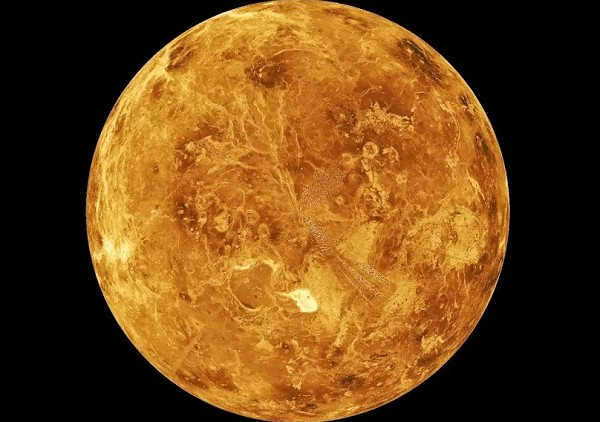
Even during ancient times, prior to the invention of the telescope, individuals possessed the knowledge to differentiate between planets and stars. The reason for this is that stars appear to be stationary, while the position of planets in the sky noticeably changes due to their movement around the Sun and the Earth’s own motion. The ancient Sumerians were already aware that the most brilliant of all the planets is Venus, although it was not given the name Venus until later.
It possesses an alternative name – the “morning star” – as it becomes visible in the sky early in the morning. Now, of course, we understand that planets, unlike stars, do not emit light themselves, but rather reflect sunlight. Venus is situated closer to the Sun than Earth, resulting in a significant amount of light being reflected.
Curious Facts about the Gas Giants in the Solar System
Gas giants in the solar system, much like any other planets, consist primarily of gases. These planets possess physical and chemical properties that are distinct and captivating, capturing the attention of individuals, regardless of their level of interest in astronomy.
Gas giants
It is a well-known fact that the celestial bodies in our star system can be categorized into two main groups: terrestrial and gaseous. The latter group comprises planets that lack a solid surface. Within our star system, there are four such celestial objects:
The gas giants in our solar system are characterized by the uncertainty surrounding the boundaries between their core, mantle, and atmosphere. In fact, scientists are still unsure about the existence of a solid core.
Based on the most widely accepted theory regarding the formation of our universe, it is believed that the gas giants in our solar system formed much later than the terrestrial planets. As one goes deeper into the atmosphere of these giants, the pressure steadily increases. Experts speculate that closer to the planet’s center, the pressure becomes so immense that hydrogen transitions into a liquid state.
Jupiter
Jupiter is the largest planet in our solar system and is classified as a gas giant. Its immense size allows it to be visible to the naked eye, making it the third brightest object in the night sky, after the Moon and Venus. Even with a small telescope, one can observe Jupiter’s disk along with its four prominent satellites.
Aside from its size, Jupiter also possesses the strongest magnetic field, which is 14 times greater than Earth’s. This magnetic field is thought to be generated by the movement of metallic hydrogen within the planet. The planet emits powerful radio waves that can cause damage to nearby spacecraft. Despite its massive size, Jupiter has a remarkably fast rotation period, completing a full revolution in just 10 hours. However, due to its large orbit, it takes approximately 12 Earth years for Jupiter to complete one orbit around the Sun.
Jupiter, being the nearest gas giant to us, has been extensively studied compared to other planets in its group. It has been the primary target of most spacecraft missions. Currently, the Juno probe is in orbit around Jupiter, gathering valuable data about the planet and its moons. Launched in 2011, the spacecraft successfully entered Jupiter’s orbit in July 2016. In August of the same year, it made its closest approach, flying just 4,200 kilometers above the planet’s surface. The next major milestone for Juno is planned for February 2018, when it will be intentionally plunged into the giant’s atmosphere. The entire world is eagerly anticipating the images of this extraordinary event.
Saturn
Saturn, the gas giant that ranks as the second largest in our solar system, holds a place of great intrigue amongst scientists due to its enigmatic rings. The origin of these rings is a subject of heated debate among researchers worldwide. Current understanding suggests that the rings are composed of variously sized pieces of rock, ice, and dust. Some particles are as minute as a speck of dust, while others measure up to a kilometer in diameter. Interestingly, the width of the rings is so vast that it could span the distance from Earth to the Moon, despite being only about a kilometer wide.
What sets Saturn apart is the amount of light it reflects, which surpasses that of the planet itself. Even with a relatively modest telescope, one can witness the breathtaking beauty of Saturn’s rings.
Further studies have revealed that Saturn’s density is only half that of water. If it were possible to submerge this gas giant in water, it would effortlessly remain afloat.
With winds at the equator reaching an average speed of 1800 km/h, the giant planet boasts incredibly powerful vortices. To put their strength into perspective, consider that the most intense tornadoes on Earth reach speeds of only 512 km/h. Additionally, Saturn’s day passes by swiftly, lasting just 10 hours and 14 minutes, while its year stretches out to a whopping 29 Earth years.
This celestial body is commonly known as an ice giant due to the fact that it consists not only of rocky materials but also contains high-temperature variations of frozen water beneath a gaseous envelope composed of hydrogen, helium, and methane. Researchers have observed the presence of hydrogen, ammonia, and frozen water clouds suspended within the atmosphere of Uranus.
Uranus holds the record for having the most frigid atmosphere within our Solar System, with temperatures plummeting to a bone-chilling minus 224 degrees. Scientists put forth the theory that water may be present on this colossal planet, which, in turn, raises the possibility of life existing there.
One fascinating characteristic of Uranus is that its equator is positioned perpendicular to its orbit, giving the planet an appearance of being tilted on its side. This unique orientation results in a distinct change of seasons on Uranus. The planet’s poles experience a period of complete darkness for 42 Earth years. It can be calculated that Uranus completes one orbit around the Sun in 84 Earth years. In terms of rotation, Uranus spins on its axis in approximately 17 hours and 14 minutes. However, the presence of strong winds, reaching speeds of up to 2 m/s, causes certain regions of Uranus’ atmosphere to move at a faster pace, completing a full rotation in just 14 hours.
In the past, it was believed that Uranus’ tilt was the result of a collision with a large celestial object. However, current scientific theories lean towards the idea that the gravitational fields of neighboring planets such as Saturn, Jupiter, and Neptune disrupted Uranus’ axis.
Neptune
This planet is the farthest from the Sun, so most of the information about it is based on calculations and remote observations.
Neptune’s year is almost 165 times longer than Earth’s. Its atmosphere is incredibly unstable, causing the planet’s equator to complete a full rotation in just 18 hours, while the poles take 12 hours and the magnetic field takes 16.1 hours.
The immense gravity of Neptune has a significant impact on objects in the Kuiper belt. There is evidence suggesting that the planet has disrupted several regions of the belt, resulting in gaps in its structure. The temperature at Neptune’s core reaches a scorching 7,000 degrees Celsius, which is similar to the temperature found on other known planets or the surface of a star.
The gas giants in our solar system share certain characteristics, but they are still unique entities that deserve to be studied extensively.
The gas giants of our solar system are enormous.
Within our solar system, planets can be categorized into two distinct types: terrestrial planets and gas giants. The gas giants, as their name suggests, are celestial bodies composed primarily of gases, lacking a solid surface. There are four gas giants in our solar system:
One fascinating aspect of gas giants is the challenge of determining where the boundary between the balloon’s outline and the atmosphere lies. Scientists speculate that, similar to Earth, there may be a solid core within these planets.
If we consider the prevailing hypothesis about the origins of our solar system, it suggests that gas giants formed much later than terrestrial bodies like Earth.
In addition to having a small solid core, the gas giant planets in our solar system are believed to experience increasing pressure beyond the atmosphere, causing hydrogen to take on a water-like form instead of its familiar gaseous state.
Gas giant celestial bodies have a brief rotation period. An intriguing fact about them is that the largest gas giants emit more heat than they receive from the sun, thanks to gravitational energy.
When these large planets reach high atmospheric pressure, compression occurs, leading to the release of even more gravitational energy. Let’s now take a look at the planets, ordered by size.
- Jupiter. It is the largest planet in our solar system and the fifth farthest from the Sun. Jupiter’s radius is 11 times that of Earth. Its composition is primarily hydrogen and helium. Additionally, Jupiter is famous for its long-lasting giant anticyclone known as the Great Red Spot.
- Saturn is situated after Jupiter both in terms of its distance from the sun and its size. It is famous for its ring system, which makes it easily recognizable. Moreover, Saturn has over sixty satellites and is the most rarefied celestial object in our solar system.
- Uranus, the third largest planet, is also seventh in terms of its distance from the sun.
- Neptune, the eighth largest planet, is similar to Jupiter in having a large dark spot.
Modern scientists speculate that there used to be approximately six giants that were much closer to the sun in the past.
It would be incorrect to assume that these planets have always existed in a gaseous form without any defined shape. This is far from the truth. On Uranus and Neptune, all gases such as ammonia and methane can only exist in a solid state.
Consequently, these objects are massive icy spheres. Presently, ongoing investigations are being conducted, which may lead to the discovery of fresh insights regarding cosmogony and the destiny of the cosmos.
Large Gas Planets
Solar System > Solar System Planets > Large Gas Planets
Large gas planets are celestial bodies that consist primarily of various gases. However, they are not solely composed of gases. Scientists theorize that large gas planets have a solid core at their center. Large gas planets are located beyond Jupiter’s orbit, which serves as the archetypal large gas planet in our solar system. Our solar system contains a total of four large gas planets: Jupiter, Saturn, Uranus, and Neptune.
As defined by the International Astronomical Union, an organization that establishes definitions for the field of planetary science, a large gas planet is a celestial object that:
Gas giants within our solar system possess a variety of similar qualities. All gas giants within our solar system are considered outer planets, meaning their orbit is situated further from the Sun compared to the Earth-group planets. In terms of size and mass, gas giants are significantly larger and more massive than Earth-group planets. To illustrate, Jupiter has a mass 318 times greater than that of Earth. Despite their considerable size, gas giants possess incredibly low densities due to their composition primarily consisting of gas. Additionally, these planets exhibit rapid rotation. For instance, Jupiter rotates at such a high speed that it becomes slightly flattened at the poles.
Gas giants are characterized as cold planets as a result of their considerable distance from the Sun. Furthermore, gas giants possess numerous satellites and ring systems. For example, Saturn is renowned for its captivating rings, which can be observed from Earth using a telescope.
Gas Giants: A Closer Look
Due to their distant location from Earth, the study of gas giants has been limited for astronomers. However, with the upcoming missions by NASA aimed at exploring the outer planets, we anticipate a significant advancement in our understanding of these celestial bodies.
References
Unveiling the Astonishing Characteristics of Gas Giants
Our solar system comprises two distinct types of planets: the Earth-group planets and the gas giants.
The Earth-group planets, namely Mercury, Venus, Earth, and Mars, are categorized as inner planets due to their proximity to the Sun. These planets are predominantly composed of solid rocky material, with a relatively small proportion of gas and atmosphere in relation to their overall mass. They are significantly smaller in size and mass compared to their gas giant counterparts.
The gas giants (Jupiter, Saturn, Uranus, and Neptune) are primarily composed of gases and are significantly larger in mass and size. Determining the exact point where the atmosphere transitions into the planet is challenging. It is believed that each giant planet contains a solid rocky metallic core.
Each planet possesses a range of remarkable and distinctive characteristics, which I invite you to explore at this moment. Let’s get started.
Jupiter: the force of gravity and lightweight gases.
Currently, there are no technical capabilities to investigate the structure of Jupiter: this planet is too immense, its gravitational force is too potent, and its atmosphere is too dense and turbulent. Nonetheless, it is arduous to discern the boundary between the atmosphere and the planet itself: this gas giant essentially lacks clearly defined internal demarcations.
At extremely high pressure and temperature, hydrogen (and possibly helium) likely exists in a unique metallic state in this region, possibly extending to a depth of 40-50 thousand kilometers. In this state, the electron separates from the proton and behaves freely, similar to metals. This liquid metallic hydrogen acts as an excellent conductor and generates an exceptionally strong magnetic field on the planet.
Saturn: a self-heating system.
Despite its outward differences, such as the absence of the famous Red Spot and the presence of the even more famous rings, Saturn bears a striking resemblance to its neighboring planet Jupiter. It is primarily composed of 75% hydrogen and 25% helium, with small amounts of water, methane, ammonia, and solid materials, mostly concentrated in its hot core. Like Jupiter, Saturn possesses a thick layer of metallic hydrogen, which generates a powerful magnetic field.
One of the key distinctions between the two gas giants is Saturn’s warm inner core: deep-seated processes already generate more energy for the planet than solar radiation, with Saturn radiating 2.5 times more energy than it receives from the Sun.
It appears that there are two primary processes at work (although they also occur in Jupiter, they are more significant in Saturn) – radioactive decay and the Kelvin-Helmholtz mechanism. The mechanism can be easily understood: as the planet cools, the pressure decreases and it undergoes compression, resulting in additional heat. However, it is important to acknowledge that there may be other factors contributing to the generation of energy within Saturn’s interior.
However, Uranus poses a unique challenge for scientists due to its insufficient internal heat. Despite its similarities to Neptune, Uranus emits much less heat and receives minimal energy from the Sun. In fact, it gives away approximately 1% of the energy it does receive. This makes Uranus the coldest planet in our solar system, with temperatures reaching as low as 50 Kelvin (-223 Celsius).
Scientists believe that the majority of Uranus is composed of a mixture of ice, including water, methane, and ammonia ice. Compared to other elements, there is significantly less hydrogen, helium, and solid rock present, with the latter likely concentrated in a small rocky core. The ice mantle makes up the majority of Uranus, although it is not the same type of ice we typically encounter. It is fluid and dense in nature.
This implies that the ice giant lacks a solid surface: the gaseous atmosphere, comprised of hydrogen and helium with no distinct boundary, transitions into the liquid upper layers of the planet itself.
Similar to Uranus, Neptune’s atmosphere is particularly notable, constituting 10-20% of the planet’s overall mass and extending 10-20% of the way to its core at the center. It is composed of hydrogen, helium, and methane, which gives the planet its blue hue. As we descend through it towards the interior, we will observe the atmosphere gradually thickening, gradually transforming into a liquid and intensely hot electrically conductive mantle.
There exists a theory suggesting that as we go deeper towards the planet’s core, the pressure and temperature become so intense that methane undergoes a process of disintegration and compression, transforming into diamond crystals. These diamond crystals then form an ocean of “diamond liquid” below a depth of 7000 km, which eventually rains down on the planet’s core. Neptune’s core, composed mainly of iron-nickel and silicates, is slightly larger than Earth’s but experiences significantly higher pressure in its central regions.
Giants of Gas
Solar System > Planets in the Solar System > Gas Giants
Jupiter, Saturn, Uranus, and Neptune are the outermost planets in our solar system. The proportions of their sizes are accurate
The planets in our solar system are classified into inner and outer planets. The ones closer to the star are known as terrestrial planets. These planets are composed of silicate minerals and metals. However, beyond the asteroid belt lies their adversaries – the gas giants.
In total, there are four gas giants, each with their own unique characteristics and divisions. Through the launch of probes, we have been able to study them more extensively and gather a wealth of fascinating information.
Definition
A gas giant is a celestial body primarily composed of hydrogen and helium. Coined by science fiction writer James Blish in 1952, the term does not accurately reflect reality as the elements within gas giants often exist in liquid or solid states. Nonetheless, the term has gained official recognition and is widely used.
Gas giants typically have lower concentrations of metals and silicates in their cores. In contrast, the term “ice giants” has been applied to Uranus and Neptune, which contain significant amounts of volatile substances.
Classification
There are 5 categories according to the scheme proposed by David Sudarka.
- I – Ammonia clouds. These include planets located in the outer region of the system (beyond the ice line). This is the distance at which volatile substances condense into solid ice particles.
- II – Water clouds. They have average temperatures (-23°C), so they are too warm to form ammonia cloud cover. Water is more reflective and therefore has a higher albedo.
- III – Cloudless. The temperature rises to 80°C-530°C, so there is no cloud cover (insufficient chemicals). They have a low albedo and appear as blurred blue spheres because methane absorbs red wavelengths.
- IV – Alkali metals. The temperature is above 627°C, causing carbon monoxide to dominate the atmosphere. The amount of alkali metals also increases. These objects are known as hot Jupiters.
Key Facts
Jupiter is the largest planet in the solar system, with a radius approximately 11 times that of Earth. It has 50 confirmed satellites and 17 potential satellites. The planet is composed of a combination of ice and rock, with the majority of its mass being liquid metallic hydrogen, which generates a strong magnetic field. Jupiter is so large that it can be seen without the need for telescopes. The atmosphere of Jupiter is primarily composed of ammonia, hydrogen, helium, and methane.
The composition of gas giants
Saturn, on the other hand, has a radius approximately 9 times that of Earth and is known for its mesmerizing ring system. It has 53 confirmed satellites and 9 potential satellites. The planet is predominantly composed of hydrogen and helium, with a dense core at its center. Saturn’s atmosphere is similar to that of Jupiter.
Uranus has a radius that is four times larger than ours. This celestial body is unique in its angle of axial tilt, which causes it to appear as if it is tilted on its side. Additionally, Uranus rotates in the opposite direction compared to most other planets. It has a total of 27 satellites and is surrounded by an atmosphere composed of hydrogen, methane, and helium. The planet was initially discovered by William Herschel in the year 1781.
The gas giants and their axial tilt
Neptune, similar to Uranus, is also four times larger than our planet in terms of radius and shares a similar atmospheric composition. It is accompanied by a total of 13 satellites and one potential candidate for satellite status. Neptune was first discovered in 1846.
Origin and typical characteristics
It is widely believed that initially, giants formed as planets made of rock and ice, similar to Earth. However, their cores were significantly larger, allowing them to attract more hydrogen and helium from the gas cloud before the star formed.
Uranus and Neptune, being farther away, faced more difficulties in accumulating material. As a result, they are smaller in size compared to the first giants. Additionally, their atmospheres contain higher levels of heavy elements such as methane and ammonia.
Scientists have discovered thousands of exoplanets, a significant portion of which are hot Jupiters. These gas giants are located extremely close to their stars. It is believed that they initially formed further away but migrated closer over time.
Giants create vast lunar families around them. Many appear alongside planets, while others are drawn in by the force of gravity. They typically orbit in the same direction as the planets, except for Triton at Neptune, which defies convention by orbiting in the opposite direction. This peculiarity suggests that Triton was captured in the distant past.
Ongoing Research
Each planet boasts a complex atmospheric layer and a series of large-scale storms. One notable example is the Great Red Spot, a tempest that has raged on Jupiter for four centuries and is currently diminishing in size. More extensive surveys are needed to uncover the true nature of these atmospheric phenomena.
The Cassini mission is nearing completion on Saturn, while Juno is conducting studies on Jupiter. Scientists are also planning to search for seismic waves that resemble terrestrial earthquakes, a potential indication of Earth-like structures within these giant planets.
Exoplanets
The exploration of distant planets has unveiled a vast array of gas giants that surpass Jupiter in size by several magnitudes. Some have even approached the status of stars. However, due to their extreme distance from us, it is challenging to determine their precise albedo and spectra.
Most of these giants are classified as super-Jupiters, as they are relatively easier to detect. These celestial objects can be further categorized as either cold or hot Jupiters. The former are enriched with hydrogen and weigh 1.6 times more than Jupiter.
On the other hand, the latter possess an immense amount of hydrogen. If these gas giants are between 13 and 80 times larger than Jupiter, they cross the threshold and become brown dwarfs. While these bodies surpass any planet in size, they still lack the necessary mass to trigger nuclear fusion in their cores and thus cannot fully transform into stars.
Gas giants are incredibly diverse and intricate in their composition. Despite the fact that we only have four planets of this kind within our own solar system, they provide a wealth of opportunities for scientific research. Furthermore, studying gas giants is crucial in piecing together the puzzle of how our system formed.
Super-Earths
Among the countless exoplanets that have been discovered, a significant number are classified as super-Earths, falling somewhere between the size of Earth and Neptune. This particular category of planets is not found within our own system, leaving us uncertain as to whether they resemble gas giants or Earth-like planets.
The scientific community is eagerly anticipating the launch of the James Webb telescope, which is expected to greatly enhance our ability to search for exoplanets and delve into the vast depths of the cosmos.
Gas Giants
Gas giants, also known as giant planets, are celestial bodies composed mostly of gas, particularly hydrogen and helium. Some examples of gas giants within our Solar System include Jupiter, Saturn, Uranus, and Neptune. TrES-4b holds the title for being the largest known gas giant.
According to the prevailing hypothesis on the formation of the Solar System, gas giants formed after the terrestrial planets. As the temperature of the near-solar nebula cooled down, gases began to solidify. At this point, most of the refractory substances like oxides, silicates, and metals had already separated from the gaseous phase. The inner planets, ranging from Mercury to Mars, then formed from these substances.
Gas giants have relatively short rotation periods, typically lasting between 9 to 17 hours.
There are different ideas about how the gas planets are structured internally. According to these hypotheses, the gas planets have multiple layers. As we go deeper into the planet, the pressure in the atmosphere increases significantly, causing hydrogen to turn into a liquid state. In some cases, if the planet is sufficiently large, there might be a layer of metallic hydrogen, which resembles liquid metal and has separate protons and electrons. This layer is located even deeper and generates a strong magnetic field due to the electric currents flowing through it. Additionally, it is believed that gas planets have a relatively small core made of rock or metal.
According to data collected by the Galileo lander, the gas planets experience a rapid increase in pressure and temperature in their upper layers. In Jupiter’s atmosphere, at a depth of 130 kilometers, the temperature measured approximately 420 Kelvin (145 degrees Celsius) and the pressure was 24 atmospheres. It is interesting to note that all the gas planets in our solar system emit more heat than they receive from the Sun. This phenomenon is likely due to their gradual compression, although some scientists speculate that fusion reactions may be occurring deep within these giant planets.
Powerful winds, reaching speeds of thousands of kilometers per hour, whip through the atmospheres of the gas planets. These planets boast incredible permanent atmospheric formations, such as massive vortices. One such vortex, known as the Great Red Spot, has been a subject of observation for over three centuries. This remarkable feature on Jupiter is several times larger than our own planet. Neptune, too, has its own impressive formation, called the Great Dark Spot, while Saturn is adorned with smaller spots.
Related Articles
Gas Planets
A gas planet is a celestial body composed predominantly of gas. It is commonly referred to as a gas giant or simply a “gas giant planet”.
Typically, the gas found in these planets is primarily hydrogen or helium, with gas giants containing the highest concentrations of these elements.
When considering which planets are classified as gas giants, there are numerous options to choose from. However, let’s focus on our own solar system. Within our solar system, there are four known gas giants.
These gas giants include Saturn, with its iconic rings, as well as Neptune and Pluto. Additionally, we have Jupiter, which not only qualifies as a giant planet but also as a gas giant.
TrES-4b is the largest known gas giant in existence. It is of immense size. If we consider Jupiter as a colossal planet, much larger than any other in our solar system, then envision a planet that is 70% bigger than Jupiter. That would be our gigantic gas giant.
However, what causes some planets to be made of gas, while the Earth’s group of planets are composed of fundamentally different substances? Here, we can rely on a theory regarding the origin of our solar system. The fact is that the giant planets formed at a later time compared to the terrestrial planets, which include Mars and others, including, of course, Earth.
During that time, the temperature of the nearby solar nebula was significantly lower, which had an impact on various mechanisms, including the crystallization of gases. This is the primary distinction between these gas giants and the terrestrial planets.
However, this does not imply that studying these planets is uninteresting. On the contrary, their unique characteristics only serve to captivate scientists worldwide. Moreover, the fact that many of them possess exceptionally powerful magnetic fields further amplifies this fascination.
Indeed, these celestial giants have the ability to attract objects that may not be desirable for Earth’s inhabitants, posing potential dangers to our planet. Therefore, it is imperative to closely monitor any developments concerning them.
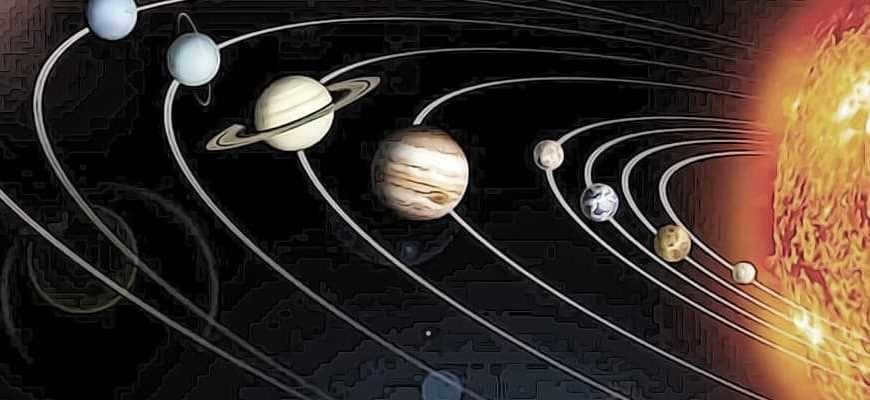
There are many individuals who can easily identify a photo of Jupiter or Saturn and state – this is a celestial body. However, the definition of this term is much more nuanced. And it has undergone changes over time. Astronomers have redefined what entities can be classified as planets, and this occurred in 2006. This redefinition followed the discovery of multiple worlds on the outskirts of the solar system. Furthermore, this decision is still a topic of controversy.
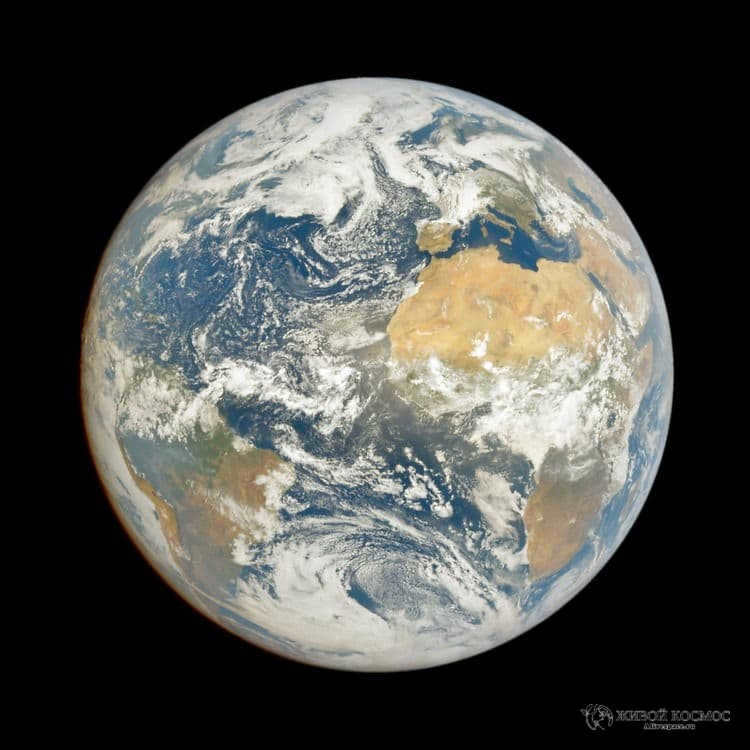
What is a planet?
The definition of a planet according to the International Astronomical Union (IAU) is as follows:
- A planet is in orbit around the Sun;
- A planet has enough mass to be round or nearly round;
- A planet is not a satellite (moon) of another object;
- A planet has no “debris” in the form of asteroid and meteorite debris in its orbit.
The IAU has also introduced a new classification called “dwarf planet”. This refers to a celestial body that meets all the criteria for a planet, except for having “debris” in its orbit. As a result of this definition, Pluto, which was previously considered a planet, was reclassified as a dwarf planet.
However, not all scientists are in agreement with this classification. Especially after the receipt of new data from the New Horizons spacecraft. This probe flew in close proximity to Pluto in 2015 and transmitted valuable information back to Earth. The data revealed that Pluto is indeed a remarkably complex world, overflowing with evidence of geologic activity. Astonishingly, mountains reaching heights of 3,500 meters have been discovered on the surface of Pluto! Additionally, an intriguing region called Tombaugh Regio has been identified, which contains methane ice and various other substances. Moreover, a peculiar snake-like icy terrain has been unearthed on Pluto, along with numerous other distinctive features. In light of this new information, the members of the New Horizons team have assembled a series of compelling scientific presentations, asserting that Pluto is undeniably a bona fide planet. planet!
Exploring the History of Planetary Discovery
The term “planet” originates from the Greek word meaning “wanderer.” Ancient civilizations were fascinated by these celestial bodies, often referred to as “moving stars.” However, it was not until the invention of the telescope in the 1600s that astronomers were able to observe them more closely. The introduction of primitive telescopes allowed for the detection of Jupiter’s satellites, a groundbreaking revelation for Galileo Galilei, who is widely believed to have been their discoverer. This discovery was met with both astonishment and opposition from the Catholic Church. In addition, astronomers later identified the presence of rings around Saturn, further expanding our understanding of the solar system. Finally, the exploration of Mars revealed the existence of a polar ice cap on the planet.
Telescopes have unveiled the presence of entities that were previously unknown to ancient civilizations. These entities seem to be situated at a considerable distance from our planet and are too minuscule to be discerned by the unaided eye. The esteemed astronomer William Herschel discovered Uranus on the 13th of March, 1781. Ceres, which was initially categorized as a planet, was found to be situated between Mars and Jupiter in 1801. It was subsequently realized that Ceres was merely the first member of a group of entities that were eventually named asteroids. The discovery of Neptune took place in 1846.
Astronomers persisted in their exploration of the outer regions of the solar system, in their quest for a substantial celestial body referred to as “Planet X”, which was thought to have an impact on the paths of Uranus and Neptune. In the year 1930, the astronomer Clyde Tombaugh made a breakthrough discovery by locating a diminutive entity situated beyond the orbit of Neptune. This entity, which ultimately came to be known as Pluto, was initially classified as a planet. Despite its modest size, Pluto possessed an extraordinarily elongated orbit, at times bringing it even closer to the Sun than Neptune.
In the solar system, it had been over two generations since anything of comparable size to Pluto had been found. However, this changed in the 2000s when Mike Brown, a young astronomer from the California Institute of Technology, began searching for objects in the outer reaches of the solar system as part of a research project.
During his research, Brown and his team came across a number of large “trans-Neptunian objects” that were located beyond the orbit of Neptune. While the discovery of icy objects was anticipated, the sheer quantity of these bodies was unexpected. The hypothesized Oort Cloud, which is believed to be the birthplace of comets, should contain trillions of such objects. This revelation caught the attention of other astronomers.
Among the notable findings made by Brown are celestial bodies like Quavar, Sedna, Haumea, Erid and its satellite, Dysnomia, as well as Makemake. All of these discoveries were made within a relatively brief timeframe, spanning from 2001 to 2005. Erida, initially nicknamed “Xena” after a popular TV series of that era, garnered enough attention to be called the 10th planet by certain media outlets.
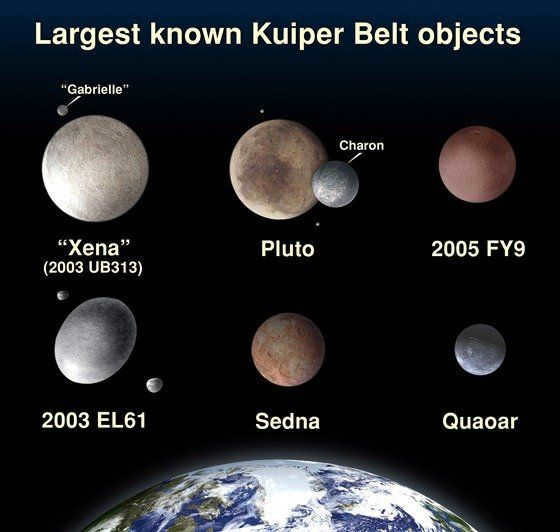
Categories of planets
Binary planet
A binary planet refers to a pair of celestial bodies of similar size and planetary mass that orbit around each other. There is a debate regarding the distinction between a binary planet and a system consisting of a planet and its moon. In most cases, moons have significantly less mass compared to their planets. However, there are two notable instances where the mass ratio between the moon and the planet is higher than average: the Earth-Moon system and the Pluto-Charon system.
The commonly agreed upon standard for classifying a double planet is when the center of mass of the two entities is not located within either of the bodies. In accordance with this criterion, Pluto and Charon are recognized as twin planets, whereas the Earth-Moon system does not meet this requirement. The question of whether Pluto should be classified as a planet or as a substantial Kuiper belt object is a separate matter.
An Earth-like planet refers to a planet whose mass ranges from 0.5 to 10 times that of Earth (M e), and has a radius between 0.8 and 2.2 times that of Earth. Planets with masses exceeding 10 M e possess sufficient gravitational force to retain a substantial hydrogen-helium atmosphere, transforming them into gas giants. Conversely, planets with masses lower than 0.5 M e are likely to lose any potentially habitable atmosphere due to their weak gravity and absence of plate tectonics, which are essential for the recycling of carbon dioxide back into the atmosphere.
Eccentric Jupiter
Jupiter, the eccentric planet, is known for its unique characteristics.
Eccentric Jupiters are exoplanets that have masses comparable to or greater than that of Jupiter. These planets revolve around their host stars in highly elongated orbits. Some examples of eccentric Jupiters are found near stars such as 70 Virginis, 16 Cygni B, and potentially HD 114762. The masses of these exoplanets range from 1.74 to 10 times that of Jupiter, and their orbital eccentricity ranges from 0.25 to 0.68. The discovery of these exoplanets, along with the unexpected discovery of another type of exoplanet called hot Jupiters, has led to a reevaluation of current theories about planetary formation. According to one hypothesis, the gravitational forces exerted on the material in protoplanetary disks create spiral density waves. These waves are similar to the ones that give rise to the spiral arms in galaxies, but on a much smaller scale. These waves then influence the formation of planets, causing them to deviate from their circular orbits and move into orbits with higher eccentricity.
A massive gas planet
A massive gas planet is a gigantic celestial body primarily composed of hydrogen and helium. It may also contain traces of methane, ammonia, and other lightweight elements. These planets are expected to possess a dense metallic core, surrounded by lighter materials that constitute the majority of the cosmic entity.
The Solar System is home to four gas giants, listed in order of their distance from the Sun: Jupiter, Saturn, Uranus, and Neptune. However, it is worth noting that the largest among them, Jupiter, challenges the notion of a “gas giant” (a term incidentally coined by science fiction writer James Blish). While Jupiter indeed boasts a substantial solid core, it also harbors a significant amount of hydrogen. Contrary to popular belief, this hydrogen does not exist solely as a gas on Jupiter; rather, it can be found in liquid or even solid, quasi-metallic states at greater depths!
Many of the exoplanets that have been discovered so far are typically gas giants. However, this is mainly due to the limitations of current detection methods, which are primarily designed to identify larger, more massive planets.
According to scientific theories, the maximum mass for a gas giant is estimated to be around 13 times that of Jupiter. It is believed that at this mass, the pressure inside the planet would be sufficient to initiate a moderate level of deuterium fusion. As a result, the gas giant would emit a faint glow similar to that of a brown dwarf. Gas giants are sometimes referred to as Jupiterians or Jupiter-type planets.
A colossal celestial body
A colossal celestial body is a celestial body that surpasses Earth in both size and mass. In practical circumstances, this likely implies that all colossal celestial bodies are composed predominantly of gas. Given the challenge of comprehending how a celestial body comprised solely of rock and metal could amass sufficient material in a protoplanetary nebula to attain such an immense magnitude.
Exoplanets with Extraordinary Orbits
Exoplanets with orbits similar to that of Jupiter, known as Hot Jupiters, have captured the attention of astronomers. These massive planets have surprisingly compact circular orbits and complete a full revolution around their host stars in less than 10 days. The discovery of this unique class of exoplanets came as a shock to scientists, prompting them to reevaluate and enhance their theories on planetary formation. The first Hot Jupiter, a planet with a mass of 0.44 times that of Jupiter, was spotted near the star 51 Pegasus. What distinguishes it is the fact that its orbit is less than one-eighth the distance from Mercury to the Sun.
A celestial object composed of ice
Uranus and Neptune were previously categorized as gas giants, along with their larger counterparts Jupiter and Saturn. However, it is now acknowledged that they have a different composition. They primarily consist of denser volatile substances referred to as ice. Hence, these planets, as well as any similar exoplanets, are commonly referred to as ice giants.
Pulsar planet
In a surprising turn of events, back in 1991, a planetary system outside of our own was discovered in orbit around a pulsar. This discovery marked the first confirmed existence of a pulsar planet. The pulsar in question is named PSR 1257+12 and is classified as a millisecond pulsar. Since then, scientists have announced the discovery of several other planets orbiting millisecond pulsars, using a method known as pulsar synchronization. However, it is important to note that many of these detections are still awaiting confirmation. The existence of these peculiar worlds has sparked intense debate regarding their nature and origin. One proposed theory suggests that pulsar planets may have formed prior to their star undergoing a supernova explosion. Nevertheless, the mechanism by which they managed to survive such a catastrophic event remains a mystery.
And the issue is not that a supernova would annihilate any nearby planets (and consequently, eradicate any life on their surface). The concern lies in the fact that it would undeniably weaken the gravitational bonds that maintain the planetary system’s cohesion. A planet that orbits a star which suddenly loses a significant portion of its mass would simply be propelled into space. An alternative and more probable scenario is that the planets around the pulsar formed after the pulsar had already materialized.
It is believed that millisecond pulsars rotate at such high speeds because they acquire material from a companion star. It appears that planets could also condense from some of this material when it interacts with the accretion disk orbiting the pulsar.
However, regardless of their origin, these peculiar and unforeseen realms do not possess any significant biological relevance. The lifespans of massive stars, which serve as the precursors to pulsars, are likely too brief to permit the emergence of any form of life, even in the presence of neighboring habitable planets. Moreover, planets that form in close proximity to a pulsar would be perpetually bombarded by intense radiation, such as x-rays and gamma rays, ultimately resulting in their desolation and absence of life.
An orphan planet refers to a planet that has lost its gravitational connection to its parent star, causing it to freely roam in interstellar space. It appears that these independent celestial bodies are quite prevalent throughout the universe, as there is mounting evidence supporting their existence.
Recent theoretical models have been developed to better understand the peculiar orbits of hot and eccentric Jupiters. These models propose that the process of planet formation is much more dynamic than previously believed. In the early stages of a planetary system, especially those with multiple Jupiter-sized objects, interplanetary billiards often occur. These collisions can result in planets being flung out of their original system, propelling them on trajectories that lead them away from their parent star. Furthermore, some theoretical models suggest that planets formed in double or multiple star systems may frequently be expelled into interstellar space.
The Trapezium cluster region of the Orion Nebula is home to real instances of rogue planets. A research conducted in 2000 discovered 13 sub-stellar objects in Orion that have masses below the threshold necessary for a body to undergo deuterium burning and transform into a brown dwarf.
At first sight, it may appear that rogue planets without sun-like stars to provide warmth would be devoid of life. However, according to a hypothesis, the possibility of habitable Earth-like planets drifting through interstellar space cannot be dismissed. If an Earth-sized planet was expelled from its planetary system shortly after its formation, it may still retain a covering of hydrogen. This hydrogen layer would trap most of the heat generated by internal radioactivity, preventing it from escaping. Consequently, the rogue planet could maintain its warmth and potentially sustain liquid water. Additionally, localized temperature fluctuations resulting from volcanic activity and lightning could have created conditions suitable for the emergence of primitive life forms.
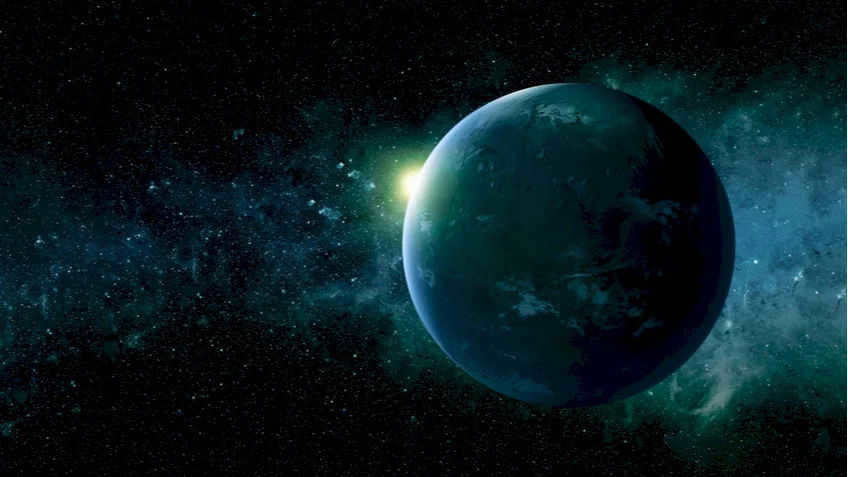
Super-Earth
A super-Earth is a type of large planet that belongs to the Earth group and has a mass that can be up to 10 times that of Earth. Super-Earths are believed to be one of the most common types of planets in our Galaxy, and it is possible that some of them could support life. Astronomers have already discovered numerous super-Earths, but their properties have been difficult to determine. This is because these planets do not pass in front of their central stars when observed from Earth. By observing such transits, scientists can determine the size of the planet and make inferences about its density and composition.
In 2011, a team of astronomers at La Silla Observatory in Chile made an incredible find. They used the HARPS instrument to discover a collection of 50 new exoplanets, all of which are similar in size to Earth and located in the habitable zone of their central star. One of these exoplanets, named HD85512b, is particularly fascinating. It is approximately 3.6 times more massive than Earth and has an orbit that indicates its surface temperature ranges from 30° to 50°C. Additionally, HD85512b has a highly humid atmosphere, making it a unique and potentially habitable world.
Planets of the Earth Group
An Earth Group planet refers to a planet that is relatively small and has a high density, featuring a solid and rocky surface. In our solar system, the Earth Group planets include Mercury, Venus, Earth, and Mars. Additionally, numerous Earth Group planets have been detected in orbit around other stars. The composition of these exoplanets, whether they are primarily made up of silicate rock with an iron-nickel core like Earth and its neighboring planets, is still unknown. Scientists have proposed the existence of carbon planets, iron planets, and Earth Group planets that lack a core.
A planetoid is tinier than Mercury!
After a sequence of flawless explorations, the International Astronomical Union meticulously examined all the data they received. Eventually, they organized a collective assembly of astronomers, which took place in 2006. The purpose of this gathering was to vote on the precise meaning of the term “planet”. The attending delegates ultimately agreed on a definition that excluded Pluto, Eridu, and any other celestial bodies of similar size from being classified as “planets”.
Based on the latest regulations, an entity circling around the Sun has the potential to be designated as a “dwarf planet”. It must possess a spherical or near-spherical shape, while remaining smaller than Mercury in terms of size. Additionally, the entity should reside in close proximity to various other entities orbiting within its vicinity, such as within the asteroid belt. The International Astronomical Union (IAU) has acknowledged five entities as dwarf planets – Ceres, Pluto, Eridu, Makemake, and Haumea. Nonetheless, there exist numerous other celestial bodies that possess the potential to be classified as dwarf planets in the future, depending on their characteristics. These include Kwawar, Sedna, Orcus, and Salacia. In order to ascertain their precise attributes, further observations need to be conducted, a process that is both arduous and time-consuming. This is primarily due to the considerable distance between these entities and Earth, as well as their relatively diminutive sizes. According to certain astronomers, it is possible that there could be as many as 200 dwarf planets within the Solar System and the Kuiper Belt.
However, even years after the vote, there are still scientists who view Pluto as a planet. For instance, in early 2014, NASA released a video showcasing the July 2013 Pluto Science Conference, where multiple speakers repeatedly referred to Pluto as a “planet.” Moreover, individuals like NASA’s Alan Stern consistently present arguments supporting Pluto’s classification as a planet. Stern highlights issues with the International Astronomical Union’s definition, which states that planets must “clear out the debris” around them.
The New Horizons mission, which explored the vicinity of Pluto, has further fueled the ongoing debate. The mission revealed complex geological features of Pluto that, according to numerous scientists, strongly validate its original planetary status.
The quest for unexplored planets persists, with one particularly captivating endeavor being the hunt for “Planet Nine.” This hypothetical celestial body has the potential to exert gravitational influence on the trajectories of objects within the Kuiper belt. Should it indeed exist, Planet Nine would possess a diameter four times greater than Earth’s and a mass ten times more substantial than our own.
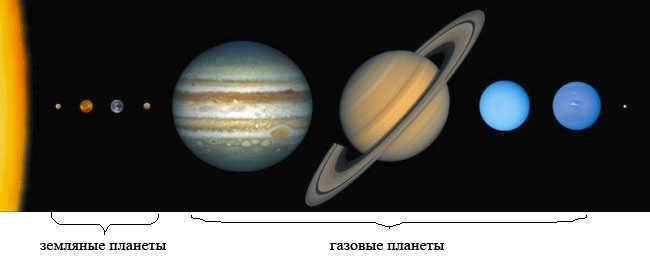
One fascinating aspect of gas giants is the difficulty in discerning where the boundaries of the balloon-like structure begin and where the atmosphere ends. Scientists propose that within such a planet, there may still exist a solid core, similar to those found in Earth-like planets.
According to the prevailing hypothesis regarding the origin of our solar system, it is believed that gas giants formed much later than terrestrial celestial bodies, such as our own planet Earth.
Gas giants in our solar system not only possess a small solid core, but it is also theorized that beyond the atmosphere, the pressure continues to increase, eventually transforming hydrogen into a water-like state instead of its typical gaseous form.
Celestial objects made up of gases undergo rapid rotation as time passes. One fascinating fact to note is that the largest gas giants emit significantly more heat than they receive from the Sun, thanks to the influence of gravitational energy.
Under high pressure, which is reached at larger depths within the atmosphere, compression takes place. This compression results in the release of even more gravitational energy. Now, let’s take a closer look at the various planets, arranged according to their sizes.
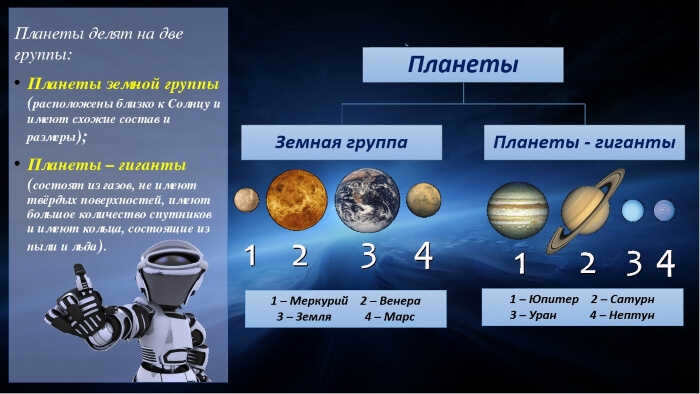
- Jupiter is the largest planet in our solar system, and it is the fifth planet from the Sun. The radius of Jupiter is 11 times greater than the radius of Earth. It consists mainly of hydrogen and helium. Additionally, Jupiter is famous for its long-lasting giant anticyclone called the Great Red Spot.
- Saturn is located after Jupiter in both distance from the Sun and size. It is known for having over sixty satellites and for its distinctive ring system. Saturn is also a unique celestial body within our solar system.
- Uranus is the third largest planet and the seventh farthest from the Sun.
- Neptune is the eighth largest planet and the farthest from the Sun. Like Jupiter, it also has a large dark spot.
According to contemporary scientists, there were approximately six giants in the past, and they were all positioned much closer to the Sun.
It is incorrect to assume that they always existed as shapeless, gaseous entities. That is far from the truth. On Uranus and Neptune, all gases such as ammonia and methane can only exist in solid form.
As a result, these celestial bodies are colossal ice spheres. Ongoing research is currently being conducted, and it is possible that we may soon uncover new insights into cosmogony and the fate of the universe.
The terrestrial planets within our solar system
The celestial bodies within the inner region of our solar system – namely Mercury, Venus, Earth, and Mars – are all prime examples of the Earth group. These planets are primarily composed of silicate rocks and metals, which are distributed between a dense metallic core and a silicate mantle. The Moon shares similarities with these planets, although its iron core is comparatively smaller.
Satellites such as Io and Europa also possess a structure akin to the Earth-group planets. Through compositional modeling, it has been determined that Io’s mantle is predominantly comprised of silicate rocks and iron, encompassing a core of iron and iron sulfide. Conversely, Europa boasts an iron core encased by an outer layer of water.
Dwarf planets like Ceres and Pluto, along with other large asteroids, share a similarity with Earth-like planets in that they possess a solid surface. However, they differ in composition, as they consist primarily of ice rather than rock.
Jupiter
NASA’s Juno spacecraft reached Jupiter in 2016 and has already made significant discoveries. One area of study has been the planet’s rings, which has proven to be a meticulous task due to their thinness compared to Saturn’s rings. Juno’s findings have revealed that the particles responsible for Jupiter’s auroras are distinct from those found on Earth. This revelation has provided insight into atmospheric enigmas, such as the presence of snow from high-altitude clouds. In addition to Juno’s research, scientists are closely examining Jupiter’s Great Red Spot using the Hubble Space Telescope. They are studying its dynamics and monitoring changes in its intensity of color.
For more than 13 years, the Saturn system has been the subject of extensive research by the Cassini spacecraft. However, in 2017, the mission came to an end. Nevertheless, scientists continue to process and analyze the valuable data collected by Cassini. In its last months, the spacecraft focused on studying Saturn’s gravitational and magnetic fields, as well as capturing new perspectives of the planet’s rings. Ultimately, Cassini completed its mission by intentionally descending into Saturn’s atmosphere.
Uranus
Uranus tempests are captivating subjects for scientific researchers and hobbyist stargazers alike. They meticulously monitor the progression and transformation of these storms. Scientists are also fascinated by examining the composition of Uranus’ rings and gathering information about its atmospheric constituents. Furthermore, Uranus potentially hosts a number of Trojan asteroids, which are asteroids sharing the same orbital path as the planet. The initial one was detected in 2013.
Neptune
Neptune’s tempest is additionally a well-known objective for perceptions. Furthermore, in 2018, that work paid off by and by. The Hubble Space Telescope exhibited that the tempest is at present subsiding. Specialists took note of that the tempest isn’t dissipating as anticipated by reproductions. This implies that our comprehension of Neptune’s climate still should be refined.
Gas giants formation
According to astronomers, gas giants initially emerged as icy, rocky planets similar to those in the Earth’s group. However, due to their larger size, particularly Jupiter and Saturn were able to attract hydrogen and helium from the gas cloud that formed the Sun, prior to it absorbing most of the gas.
In contrast, Uranus and Neptune, being smaller and having more distant orbits, faced difficulties in efficiently gathering hydrogen and helium compared to Jupiter and Saturn. This is likely the reason why they are currently smaller in size compared to their counterparts. In terms of percentages, their atmospheres are more enriched with elements heavier than hydrogen and helium, such as methane and ammonia. This is mainly because they are significantly smaller in size.
Giant planets possess a multitude of satellites. Numerous satellites are believed to have formed simultaneously with their parent planets, as evidenced by the fact that planets and their satellites rotate in the same direction. A prime example of this is Jupiter, whose massive satellites Io, Europa, Ganymede, and Callisto all exhibit this rotational pattern. However, there are instances that deviate from this norm.
One such exception is Neptune’s satellite Triton, which orbits the planet in the opposite direction of Neptune’s rotation. This suggests that Triton was ensnared, possibly by Neptune’s denser atmosphere, as it drifted away. There are numerous other small satellites within the solar system that orbit from their planets’ equators, indicating that they too have been captured by the powerful force of gravity.
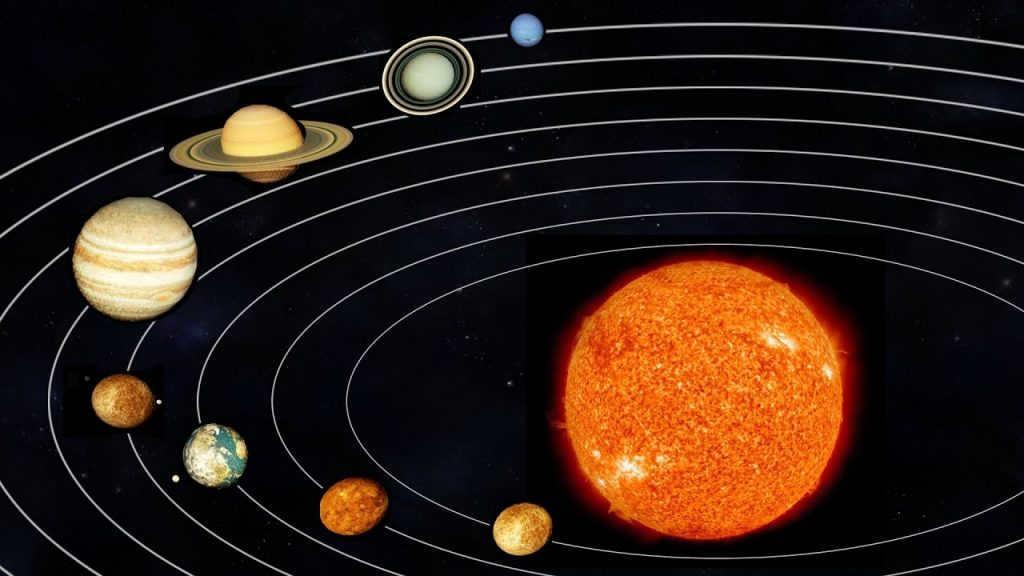
Throughout history, humans have always had a deep curiosity about the world surrounding us. From ancient times, our ancestors would gaze up at the sky, yearning to understand what lay beyond. Yet, as time progresses, our species evolves, and with the aid of cutting-edge technologies, we are gradually unraveling the mysteries that have long plagued us. Presently, we comprehend that our home is none other than the planet Earth, which orbits the Sun alongside its fellow celestial bodies within the solar system. Nevertheless, scientists refuse to rest on their laurels, tirelessly striving to further comprehend the intricacies of our planetary system.
The solar system is made up of planets, moons, comets, asteroids, meteorites, and a solitary star known as the Sun. The Sun was formed approximately 4.5 billion years ago following the explosion of a supernova. It emits heat, energy, and light, and has a surface temperature of 1,500,000 degrees Celsius.
The solar system consists of two main types of planets: terrestrial planets (such as Earth, Mercury, Mars, and Venus) and giant planets (including Jupiter, Saturn, Neptune, and Uranus). The terrestrial planets are characterized by their rocky composition and close proximity to the Sun. On the other hand, giant planets are predominantly made up of gases and are located much farther away from the Sun. One distinctive feature of giant planets is their rings, which are primarily composed of ice. Additionally, these planets have a large number of satellites that are attracted to them due to their substantial size. It’s worth noting that Pluto doesn’t fall into either of these categories. It is situated too far away from its star and is classified as a dwarf planet.
Mercury is the smallest planet and is the closest one to the Sun. Due to its slow rotation speed, temperatures can drop to -170° C at night and rise to +400° C during the day. It takes Mercury 58 Earth days to complete one revolution around the Sun.
Venus
Venus is the second planet in the solar system and is the closest one to our planet. Even though Venus is not as close to the Sun, the temperature here can reach up to +500° C. This is mainly because of the greenhouse effect and the high levels of carbon dioxide. As a result, there is scarce atmosphere and no shield against the Sun’s heat.
Planet Earth
– serves as the third celestial body in our solar system, offering a unique haven for life to flourish. This extraordinary planet boasts an atmosphere comprised of hydrogen and carbon, a crucial combination that sustains various life forms. Remarkably, the Earth’s ozone layer shields it from excessive solar radiation, enabling the evolution of diverse species. Approximately 70% of the Earth’s surface is enveloped by water, while the remaining terrain comprises continents. The presence of oxygen and favorable weather conditions have fostered the development of life on land, in water, in the air, and even beneath the Earth’s surface.
The Moon, Earth’s sole satellite, diverges significantly from its host planet. Lacking an atmosphere, its pockmarked surface serves as a testament to the countless meteorite impacts it has endured throughout its existence.
Mars
– is the fourth planet in the solar system and derives its name from the ancient Roman deity associated with war. The average temperature on Mars is approximately -60° C. In recent times, researchers have made significant discoveries of river channels on Mars, providing evidence of the presence of water on the planet. Additionally, Mars is orbited by two satellites, Phobos and Deimos, both of which possess a relatively small size and an irregular shape.
Jupiter
– is the biggest planet in our solar system. Jupiter’s diameter measures a whopping 143,000 km. Just like all other gas giants, Jupiter is composed mostly of gases that are in constant motion. It spins around its axis at a remarkable speed, completing a full rotation in approximately 10 Earth hours. Jupiter boasts an impressive number of satellites, with around 79 known companions. Among these, the most prominent ones are Io, Ganymede, and Europa.
Saturn is the second largest and arguably the most stunning and distinctive planet in our solar system. With a mass equal to 95 times that of Earth, it takes approximately 30 Earth years for Saturn to complete a full orbit around the Sun. This captivating planet is named after the ancient Roman god of agriculture. Saturn boasts an impressive 82 satellites, with Titan and Enceladus being the largest among them.
Uranus
– This enigmatic planet derived its name from the sky god of ancient Greece. It boasts a striking blend of mesmerizing blue and green hues. Due to Uranus’ noticeably tilted axis, getting a full view of its poles from Earth is an impossibility. Out of all the colossal planets within the Solar System, Uranus possesses the smallest mass, despite having a greater radius than Neptune. It is home to approximately 27 satellites, with the renowned Titania and Oberon being the most prominent.

